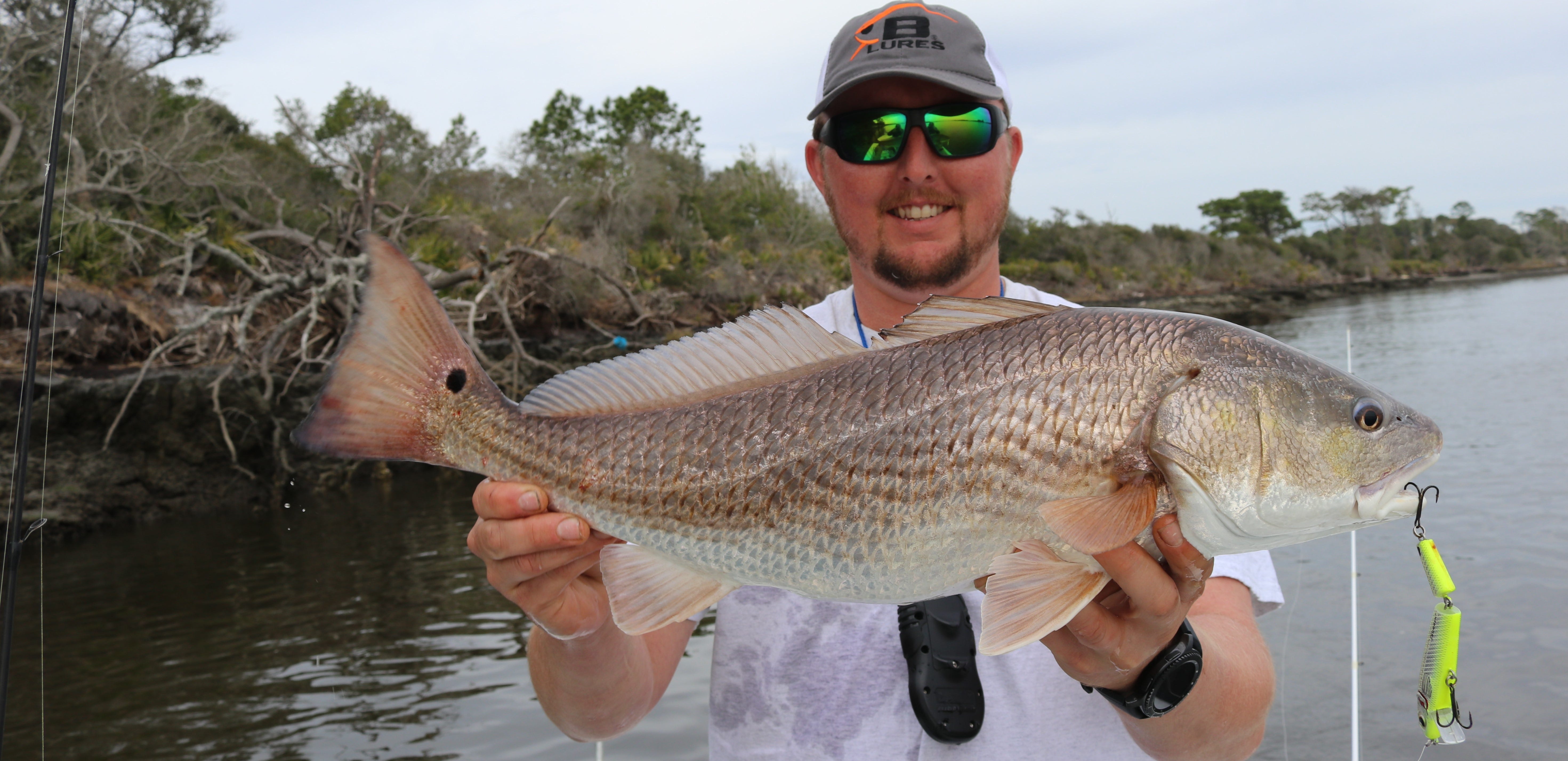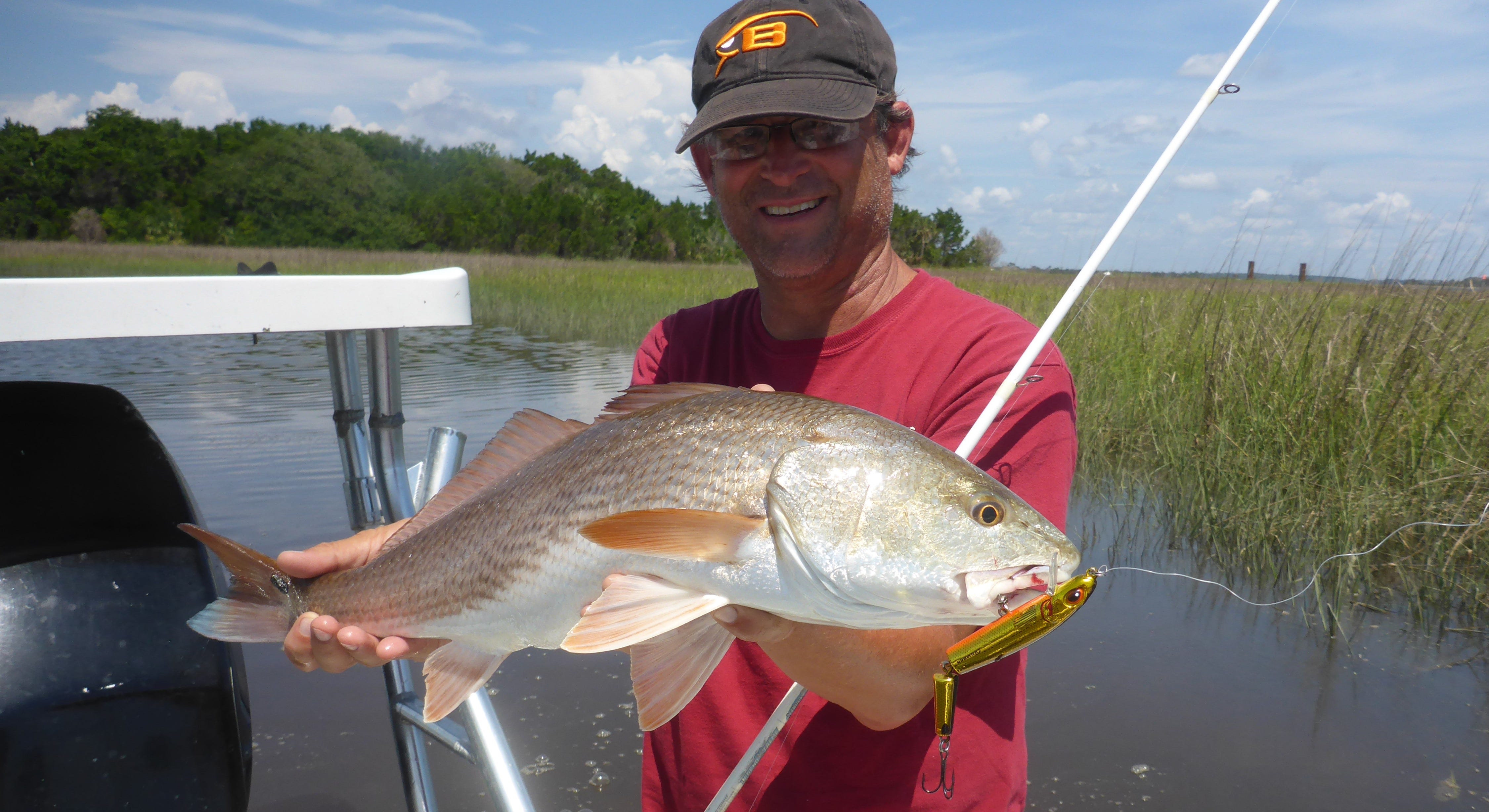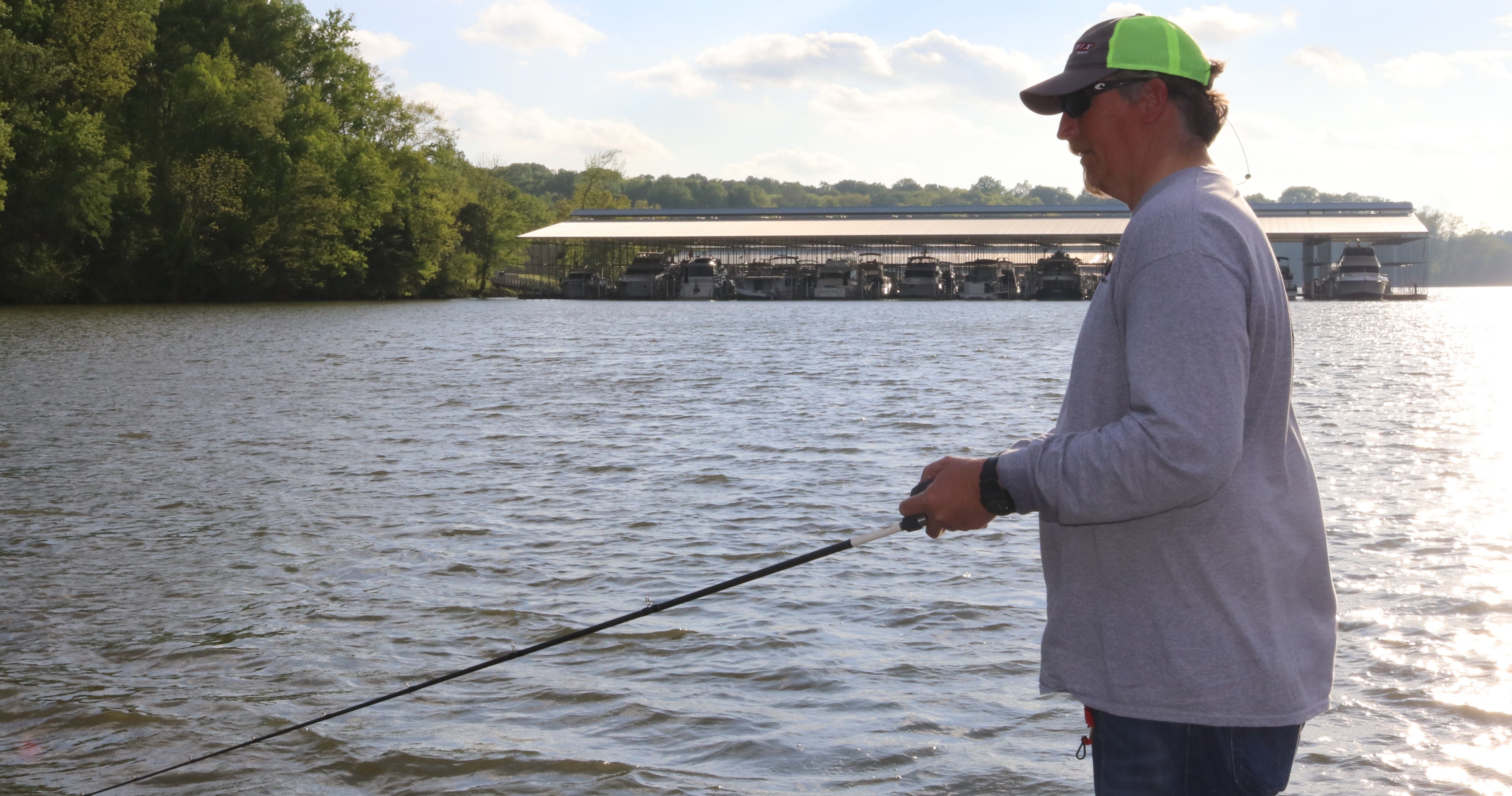- May 10, 2021
Use Wake Baits to Catch More Fish
Waking the surface with crankbaits and minnow lures is a highly effective tactic for everything from bluegills to saltwater predators like redfish and striped bass. Here’s what you need to know about this fun fishing technique.
You wouldn’t think a 1 ½-inch Rebel Crickhopper and a 7-inch Cotton Cordell Red Fin would have anything in common. One is grasshopper shaped, weighs only 3/32 ounce and is best fished on ultralight tackle. The other is shaped like a big baitfish, weighs a full ounce and is best suited for fairly heavy spinning or baitcasting tackle.
However, these two baits (along with many others that fall in-between in size) lend themselves to fishing the same way. Both work wonderfully as wake baits, and while the scale of everything, the setting and the fish species targeted differ substantially, the actual technique and the explosiveness of the results are the same.
The Waking Approach


Waking, which works with shallow running crankbaits and minnow baits and with “wake baits” that are designed specifically for the task, is simply reeling a floating/diving swimming lure at such a pace that it stays right at the surface, which pushes out a V-shaped wake. “At the surface” can mean fully on top or barely below, so the lure is mostly submerged but creates a continuous bulge and a wake.
Generally speaking, a steady cadence works best for waking, so the approach is to cast, allow the lure to rest for a moment, and then simply to reel steadily at a pace that is fast enough to engage the lure’s swimming action but slow enough to keep it at the surface. That speed and the rod angle vary by lure, which is an important determinant for the best specific lure to use.
Some anglers like to add an occasional hitch to trigger strikes, whether by hesitating momentarily or adding a twitch of the rod tip. However, most wakers contend that steady is the way to go for this approach.
Lures like Crickhoppers, Red Fins and Bomber 15As, which naturally dive a few feet deep when retrieved, need to be reeled very slowly, with the rod kept high, for waking presentations. Baits made to wake, such as a Bomber Jointed Wake Minnow or a Rebel Teeny Wake R, can be swam a little faster and will remain at the surface.
Why Waking?


Waking a lure works great for low-light conditions (including nighttime) because the vibration and steady movement allows fish to home in on the target. It’s also great for covering flats and other broad areas to find feeding fish.
The waking approach provides the perfect in-between when fish are looking up to feed but aren’t quite active enough to attack noisier topwater lures. Bass anglers really like waking a Bomber 15A on slick calm days just before or after the bass spawn. For all species, waking generally works best when the water is fairly calm and clear to lightly stained.
Waking a lure also imitates natural forage behavior in many instances. Waking a Crickhopper, for example, imitates the behavior of a cricket, hopper or other terrestrial that finds itself displaced and afloat. After a moment or two of trying to gain orientation, a real insect will swim steadily on the surface in hopes of finding land again before being eaten.
Minnow baits and crankbaits, meanwhile, effectively imitate various forage fish in fresh and saltwater settings when waked. Gizzard shad, blueback herring and mullet are just a few common baitfish species that often swim close to the surface, sometime shallow enough to push up wakes.
Wake Bait Variables


As already noted, baits suitable for waking presentation vary substantially shape and size, and different situations call for different lures.
Size is an obvious variable that needs consideration. The species you are targeting, the size of prevalent forage, the tackle you are using and factors like wind and water color that affect visibility all help determine the size of wake bait to choose.
Related to size, profile is an important distinguishing feature. A Bomber 15A and Jointed Wake Minnow are both minnow shaped, but the 15A has a slender profile that makes it very unobtrusive, while a Jointed Wake Minnow is bulkier and therefore bolder. Some baits used for waking, like a Bomber Shallow A or a Rebel Teeny Wake-R, have a classic crankbait shape and suggest bluegill type forage more so than minnow or other elongated batfish. Of course, there are specialized shapes, like a Rebel Crickhopper or Bumble Bug, each with an obvious distinct appeal.
The way a lure moves across the surface also helps set apart one wake bait from another. A 15A sort or rolls on top while a Red Fin has a wider side-to-side kick. A Jointed Wake Minnow has a broad slithering action, like a wounded baitfish or even a snake because of the jointed body configuration.
Waking speed is another important consideration. Baits designed primarily for subsurface swimming need to be worked very slowly, adding a measure of subtlety. True wake baits, like a Jointed Wake Minnow can be fished notably faster to draw reaction strikes, and they’ll remain at the top to create a waking action.
Additional considerations that help you pick the perfect bait to wake any given day include sound, hook configurations and available color patterns.
Finding the best wake bait to fish sometimes calls for experimentation. Begin with what fits best based on what you know about the fishery, forage and conditions, but be willing to try other waking lures and presentation speeds and pay attention to what the fish reveal by their reactions.
Tips for Wake Bait Success


- Use mono or braid. Fluorocarbon sinks and makes it harder to wake lures effectively.
- Keep it steady.
- When a fish misses, keep reeling and stay ready (easier said than done, but worthwhile).
- Experiment with speeds, even if that requires changing baits. Sometime a slightly faster or slower waking presentation makes all the difference.
- Wear polarized glasses. Seeing in the water is important both for identifying subsurface cover that might hold fish and for spotting followers, which helps you pattern fish.
A Different Spin on Waking


An alternative approach to waking, which maximizes thump and adds some flash, is to wake a spinnerbait, moving it quickly enough to keep the top blade barely wet and pushing up a surface bulge. Again, retrieve speed and rod angle are key to effective presentations.
A double-bladed spinnerbait with over-sized Colorado blades works well for a waking presentation because it easy to keep this type of spinnerbait at the top without reeling too quickly and because big round blades naturally bulge the surface and send out a lot of thump. The War Eagle Wake Bait spinnerbait was designed specifically for this application.
More on the Bomber Jointed Wake Minnow
Please visit Lurenet.com for wake baits and other lure needs and for more fishing content.
Cotton Cordell Jointed Red Fin
Striped bass are among multiple species Alabama guide Jimmy Mason catches on a Bomber Jointed Wake Minnow.





